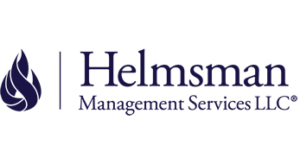
In a world of evolving risks, commercial auto exposures continue to challenge businesses, no matter the size of their fleets. Understanding the risks is crucial to get a better grip on the causes of claim frequency and severity. The following are the top nine trends driving up commercial auto losses.
More miles, more vehicles.
There’s simply more opportunity for accidents. From 2016 to 2017, vehicle miles traveled increased by 1.2%, and total cumulative travel in 2018 grew by 10.3 billion miles. More miles also means more stress, as traffic congestion and fatigue trigger more aggressive driving.
Road rage.
Angry drivers vent their frustration by speeding, tailgating, running red lights, failing to use turn signals, and other dangerous aggressions. According to the AAA Foundation for Traffic Safety, more than 68% of drivers believe aggressive driving is worse now than it was three years ago. Statistics support their convictions: the National Highway Traffic Safety Administration (NHTSA) reports that in 2017, speeding was at least partially responsible for almost 10,000 deaths and 26% of all fatal crashes.
Impaired driving.
Although drunk driving has fallen by a third over the last thirty years, there were still more than 10,800 deaths from alcohol-impaired crashes in 2017, according to the NHTSA. In addition, impairment from marijuana and other drugs is increasing: a 2018 report from the Washington Traffic Safety Commission notes that 44% of impaired drivers in fatal crashes between 2008 and 2016 tested positive for two or more substances.
Too many distractions.
Good news: after two years of increases, fatality numbers declined in 2017. Unfortunately, distracted driving – talking, texting, eating, drinking, using devices – accounted for 8.5% of the year’s fatalities.
Less experienced drivers.
For two years running, the nation’s commercial carriers have identified driver shortages as their primary concern, having experienced annual turnover rates at their highest levels since 2013. As a consequence, many firms hire younger drivers with less experience, less training, and shorter driver records, imposing a greater safety risk.
Alternative means of transportation.
New modes of transportation – such as bicycle shares and scooters – have increased the number of people killed “outside the vehicle” from 1996’s 20% low to a 33% high point in 2017, attributable, some believe, to a combination of more distracted drivers and pedestrians.
Repair costs rising.
The high-tech features drivers love, such as backup cameras, anti-lock brakes, and blind-spot sensors, improve safety at a cost: increased loss severity. More complex parts are simply more expensive to fix and replace. Consider the humble bumper: replacing a 2016 bumper, complete with sensors and other technology, cost 130% more to replace than a 2014 bumper on the same car model.
Growing medical costs.
From 2012 to 2017, economic losses incurred by bodily injury liability insurance claims grew by 10%, a whopping 7% greater than the same time period’s medical inflation rate. Today, the Insurance Research Council (IRC) reports that medical expenses are responsible for 79% of all claimed economic losses.
Aggressive litigation.
People are “lawyering up.” The IRC notes that the number of bodily injury claimants hiring attorneys has increased from 49% in 2007 to 52% in 2017; in personal injury protection claims, the numbers for the same years increased from 32 to 39%. Litigation funding, in which outside investors stake legal fees in exchange for a percentage of the settlements or judgments, has also encouraged more litigation. With greater access to legal support, more claimants go to trial, or seek more expensive treatments, that can prolong litigation and increase claims costs. As a consequence, the industry is experiencing larger trial verdicts, while public sympathy tends to favor individual drivers as opposed to large businesses.
Keeping Our Eyes On the Road
Just as drivers should not allow themselves to be distracted, commercial enterprises cannot neglect the root causes of crashes. By working cooperatively with their third-party administrators, businesses can “take the wheel” and adopt more effective ways to control losses.
This website is general in nature, and is provided as a courtesy to you. Information is accurate to the best of Helmsman’s knowledge, but companies and individuals should not rely on it to prevent and mitigate all risks or as an explanation of coverage or benefits under an insurance policy. Consult your professional adviser regarding your particular facts and circumstance. By citing external authorities or linking to other websites, Helmsman is not endorsing them.


